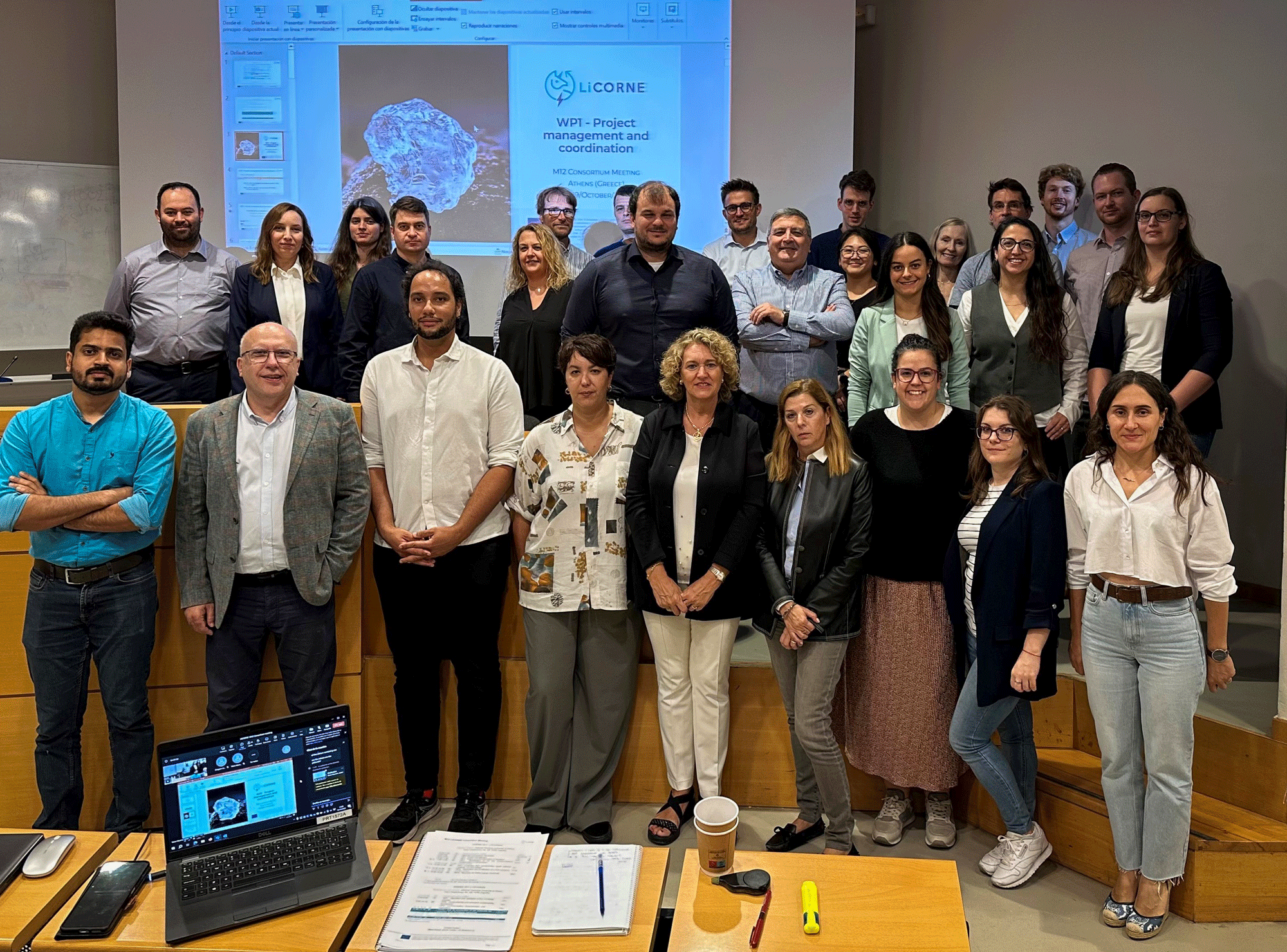
27/10/2023
LiCORNE: 12-month update on the technological progress
Marking the project’s first anniversary, the LiCORNE partners gathered in sunny city of Athens to draw the line and brief on the progress achieved thus far. The meeting was hosted by the National Technical University of Athens (NTUA) and it unfolded over two days, including also a visit of the NTUA mineralogical museum and its metallurgy laboratory facilities.
Press the “play” button below to watch snippets of the 1-year consortium meeting and interviews with various partners
Supply and characterisation of feedstock
Starting with work package (WP) 2, partners from EnBW presented the characteristics of the Bruchsal geothermal reservoir, located at the eastern edge of Upper Rhine Valley. EnBW highlighted that geothermal brines in the Upper Rhine Valley are recognised for their relatively high lithium (Li) concentrations. Additionally, the region displays an extension structure striking in the NNE-SSW direction, with a length of around 300 km and a width of up to 40 km. In this area, the deep geothermal fluids utilised for geothermal applications exhibit a maximum Li concentration ranging from 163 to 190 mg/L (Sanjuan et al., 2016). The highest Li concentration was detected in the hydrothermal alteration zone of Lower Buntsandstein.
In the forthcoming months, new samples are prepared for delivery to research partners: geothermal and continental brines, but also Li-phosphate samples, a new Li-mica concentrate and synthetic brine solutions. Upcoming research will mainly focus on the geochemical analysis of rock samples from the reservoirs.
Beneficiation and physico-chemical transformation of concentrates
In the mining industry or extractive metallurgy, beneficiation is any process which removes the gangue minerals from ore to produce a higher-grade product, and a waste stream – which, despite the lack of valuable materials, needs to be sustainably treated. In charge of the beneficiation step, TU Delft already presented in M12 videos of the operational opto-magnetically-induced sorting lab setup to process crushed spodumene ore. This proof of concept aims to separate the Li-rich fractions of the ore before reaching the metallurgical processes. This preliminary step helps improve efficiencies and decrease cost in processes downstream.
Researchers at NTUA, working on the development of a calcination technology working at lower temperatures, presented the first results of their investigations using various additive combinations and leaching experiments studying the effect of temperature, time and leaching agents. Tests showed that the use of additives has the potential to maintain the calcination operating temperature of spodumene at low temperatures compared to conventional routes. Moreover, researchers achieved over 92 % Li extraction during various leaching experiments conducted so far. Recognising the environmental footprint associated with the conventional routes used for Li extraction, NTUA research team will continue experimenting with new additives in order to develop a new technology that is more environmentally sustainable and equally more competitive.
Working with spodumene samples, TECNALIA researchers have been working on the ball milling-assisted chemical transformation, testing the use of various additives and experimenting with different thermal treatments. Their upcoming work will focus on optimising the ball milling process to obtain materials with similar leaching properties but being produced with less intense thermal processes.
Read the next article for a complete overview of all the work packages.